2017 Annual Report for LS16-274
The Impact of Mineral Particle Film on Blackberry Diseases and Insects, and Primocane Fruit Quality and Yield
Summary
Blackberries are an important fruit crop in Arkansas. Although the majority of varieties that are grown are traditional floricane-fruiting varieties, there is an interest in using primocane-fruiting types to provide berries at a time of year (late summer, early fall) when market prices are at a peak. Unfortunately, there is little information available on managing diseases and insect pests on plants that are fruiting at this time of year. In addition, high late summer temperatures can have a negative impact on primocane-produced fruit production and quality. The use of mineral particle films such as kaolin clay (Surround WP®) to lower leaf temperatures and protect plants from solar injury has been suggested as a way to enhance primocane fruit production. Experiments will be established on two commercial farms in northern and central Arkansas, (Sta-N-Step Farm near Fayetteville, AR, and Gillam Farms of Arkansas, near Judsonia, AR, respectively) and in eastern Texas to evaluate the effects of mineral particle film applications during the late season on blackberry production and on arthropod pests and diseases.
We have had a successful first year in our project.
Gillam Farms already had 2 year old established Prime Ark 45 primocane fruiting blackberries in production. However, Sta-N-Step planted 100 Prime Ark Traveler blackberries on April 22 and Moss Springs Farm planted 100 Prime Ark traveler plants on May 6, 2016. Drip irrigation was installed and landscape fabric was established on both sides of the row to help with soil moisture and weed management. Plants were allowed to grow during the summer (Fig. 3). A trellis system was installed in the fall on each row (Fig. 4). Plants were pruned as needed in January, 2017 to retain 5-6 healthy floricanes to ensure good development of the fall (2017) and 2018 primocane crop. A delayed dormant application of Sulforix (2% solution) was applied to both IPM treatments (IPM with and without Surround) in February. The plots will be fertilized according to soil test recommendations in April, 2017.
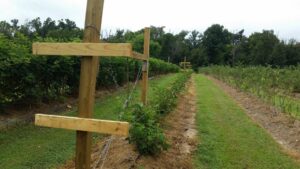
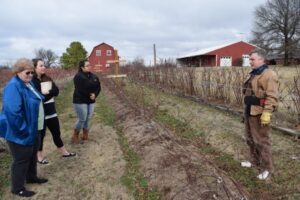
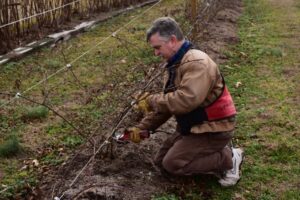
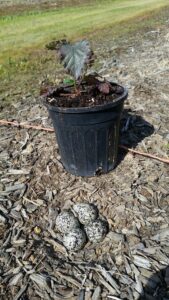
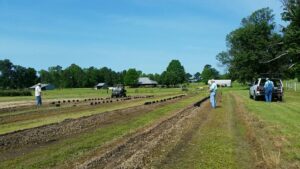
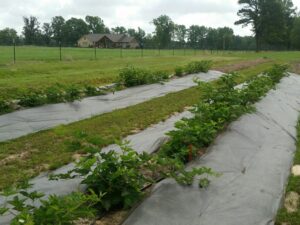
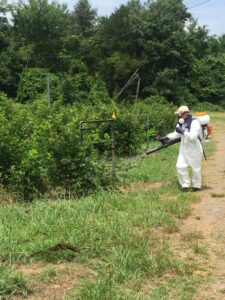
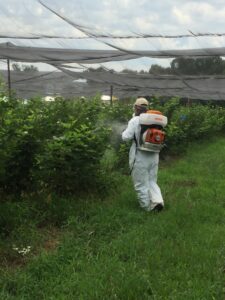
Objectives/Performance Targets
Experiments at all three sites will be randomized complete blocks with four replications of each of the following treatments: 1) Surround WP® applied weekly during July-September; 2) Surround WP® applied weekly plus conventional integrated pest management practices; 3) No Surround WP® but use conventional integrated pest management practices, and 4) No Surround WP® and no disease or insect control. Leaf temperatures will be monitored in all plots throughout the season. In addition, plots will be monitored for spotted wing drosophila, broad mites, spider mites and stink bugs, and weekly inspections and severity ratings will be made for anthracnose, cane blight, rosette, or other diseases. Fruit yield as well as quality will be measured by weekly inspections of 10random berries for anthracnose, grey mold, and SWD larval infestation and weekly berry yield, marketable yield and total berry yield. Grower inputs will be recorded during the two years of the study and a spreadsheet-based interactive sustainable enterprise budget for blackberries based on best practices for production in the Southern US (Rodriguez et al., 2015a) will be used to determine the economics of the system. Outreach and outcome evaluation will be through traditional dissemination methods including fact sheets, videos, and field days, with novel digital strategies. Digital strategies proposed to re-purpose and expand the reach of these methods include:uaex.edu dedicated web page/presence, Twitter feeds and Periscope video broadcasts (during project implementation and crop monitoring), and live/real-time interactive webinars and a virtual field trip to deliver educational content and engage participants in proof-of-concept analysis and active learning.
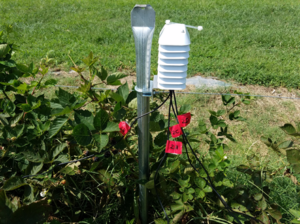
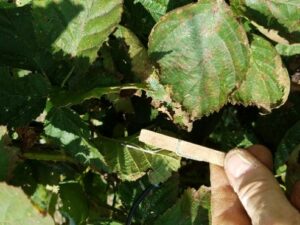
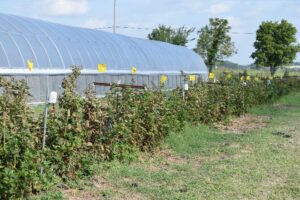
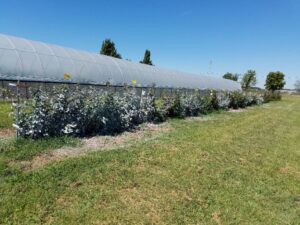
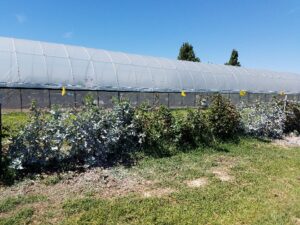
Communications Objectives/Performance Targets:
Communications deliverables did not meet planned target dates. Co-PI Ballard who coordinates this effort did not begin work on this project until August of 2016 due to a health problem.
Goals and Performance:
Goal 1: To create and manage the structure and functions of multiple digital tools for end-user producer input, involvement, engagement and feedback within Arkansas, across the Southern region, and the United States.
- SharePoint Site developed and resources loaded for project content curation beginning in August 2016.
- Initiation of monthly project team meetings for support of communication, project management, and evaluation began on 9/29/16 utilizing the Zoom system.
- SharePoint training delivered (and archived) for project team on 9/29/16 through Zoom webinar to support collection and sharing of project content.
- Recruitment of a digital media/educational assistant for communication and outreach (11/16/16).
Goal 2: To grow a digital learning community for developing insights into the application and adoption of developing technologies.
- Collection and curation of contact information for creation of an electronic community began in November of 2016.
- Description of current electronic community: 1,242 members
Arkansas and regional (southern) farmers, blackberry propagators, AR SSARE Blackberry project team, AR FFA instructors (targeting youth audience), and Extension agriculture agents from across the county.
Goal 3: To expand accessibility to the knowledge base during development and applied research.
- Project branding tasks included: Logo development; creation of dedicated project home page on uaex.edu web-site; creation of seven supporting pages for home page; and 29 print/pdf producer resources uploaded.
- Editing and posting eight videos to digital sites.
- Creation of original content and graphics for development of electronic newsletter.
- Creation of Twitter, Facebook & Constant Contact accounts for support of launch of digital communications.
- Final content review being conducted with digital media launch pending.
Accomplishments/Milestones
Twitter site: https://twitter.com/SARE_Blackberry Blackberry Research (@SARE_Blackberry)
Facebook page: https://www.facebook.com/SSAREBlackberry/ SSAREBlackberry
Short url for website: https://uaex.edu/ssareblackberry
Links to all videos on You tube:
Gillam Videos: https://www.youtube.com/watch?v=XRkzHcMcFBM
https://www.youtube.com/watch?v=bT_CuDROtv4
https://www.youtube.com/watch?v=ut55IYUxLRc
https://www.youtube.com/watch?v=cksAsTj53WA
Moss Springs Video:
https://www.youtube.com/watch?v=_IncFCTyOEA
Sta-N-Step Videos:
https://www.youtube.com/watch?v=Kf_VGNVzh6A
Impacts and Contributions/Outcomes
Les Dozier prepared a 300 ft raised bed row and installed drip irrigation by 22 April 2016 when he planted 100 Prime-Ark® Traveler blackberry plants 2 ft apart. By 18 August, this row of blackberries were healthy, averaged 1 ft tall and Les had installed a trellis with two wires at 1ft and 4 ft heights . On 19 January 2017, Les discussed and was videotaped as he demonstrated and described how to winter prune these 9 month-old primocane-fruiting blackberry plants to retain four or five healthy floricanes to ensure development of 2017 and 2018 primocanes . The goal is to obtain mature plants by summer 2018.
Canopy versus Ambient Temperatures: On 6 and 12 September 2016, each of four WatchDog 1650 loggers (4 replicates) in radiation shield records data at ½ hr intervals of ambient air temperature and %RH and temperatures from 2 to 4 microsensors pinned to underside of leaf in canopy interior in each of 4, 10 ft blackberry plots in each of two fields: 180 ft row of three 60 ft plots of mature primocane-fruiting blackberry cultivars (Prime-Ark®45, APF205, or Prime-Ark®Traveler) at the Arkansas Agricultural Research and Extension Center in Fayetteville, AR; and four, 40 ft rows of Prime-Ark® 45 blackberries at Gillam Farm near Searcy. In Fayetteville from 11am to noon on 12 September 2016, two plots in each section were either untreated or whitewashed with Surround WP kaolin clay. At each location, temperatures in canopy interior were 1.2 °F cooler than ambient air temperatures in loggers in radiation shields.
In 2017, one of four treatments will be applied to 10 ft plots including: 1) whitewashing with Surround only; 2) whitewashing with Surround + PM practices as needed; 3) No Surround + PM practices as needed; and 4) untreated (control). One logger will be set at 3ft height just outside canopy of one the four treatment plots to measure ambient air temperature. This logger will record temperatures from its 4 temperature sensors pinned to underside of leaflets in lower canopy interior in that same treatment plot (4 reps. of temperature in each treatment plot). This will be repeated in the other three treatment plots. Treatment plot inner canopy temperatures will be averaged and compared among treatments and the ambient temperatures.
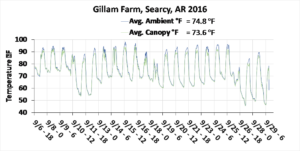
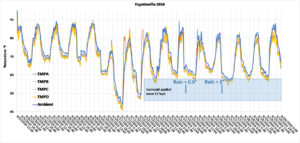
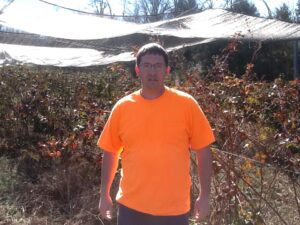
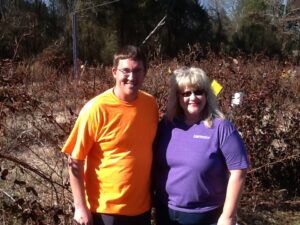
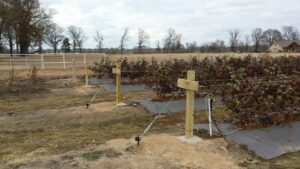
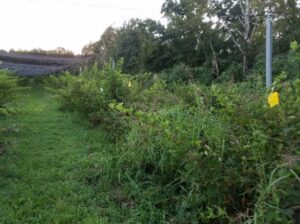
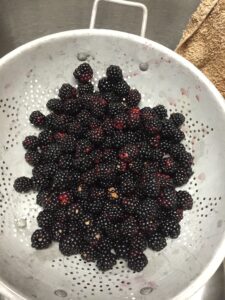
Objective 3 analyzes the economic feasibility of primocane fruiting blackberries. Performing this analysis requires the collection of production and value data from project research partners. To ensure adequate data are collected, initial contact was made with participating farms. During this contact, they were asked to review data collection sheets that were specifically developed for this portion of the project. We will be scheduling meetings with farmers during year two to further discuss their production methods and ensure that values are being properly recorded using the data collection sheets. During year three, we will continue collecting data from producers. Once data collection is complete, we will use these values to update our Interactive Sustainable Blackberry Budget tool and estimate the economic outcome of primocane fruiting blackberry production under various scenarios.